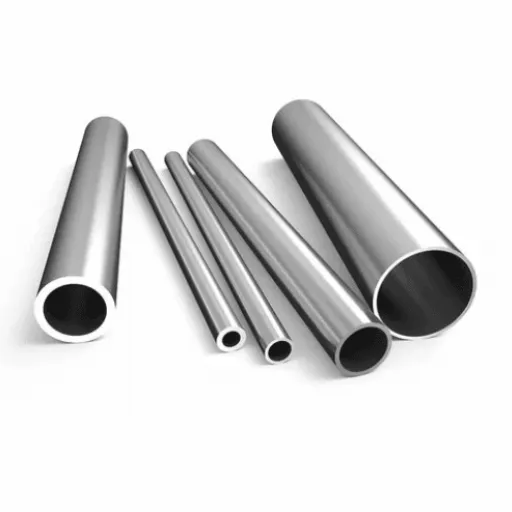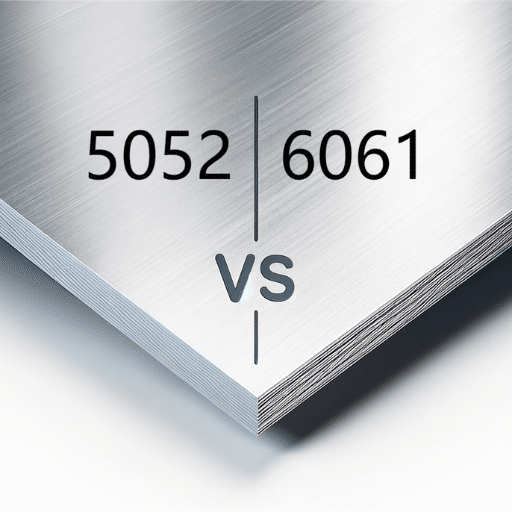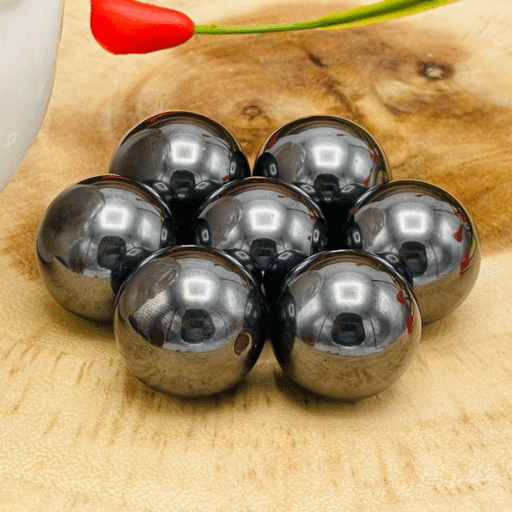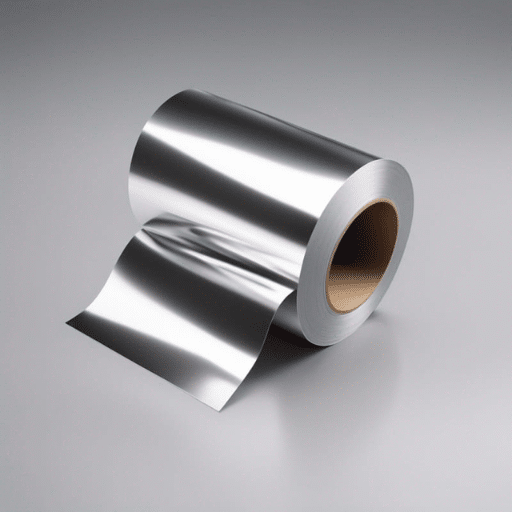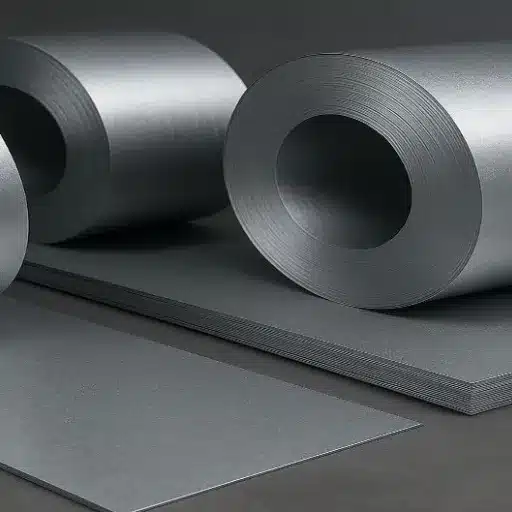The broad versatility of stainless steel-class metal is used in almost every domain of industrial work, and among its grades, “18-8 stainless steel” is frequently mentioned due to its inherent popularity and usage. But what exactly does the term “18-8” imply? How does it compare with other better-known types, such as Type 304 and Type 316 stainless steel? This article delves deep into what defines 18-8 stainless steel: corrosion resistance, durability, and mechanical strength. We also discuss applications and weigh in on where it stands about the 304 and 316 grades for various applications. Whether you are selecting materials for manufacturing, engineering, or construction, this comprehensive overview will equip you with the knowledge needed to make an informed choice.
Physical and Mechanical Properties
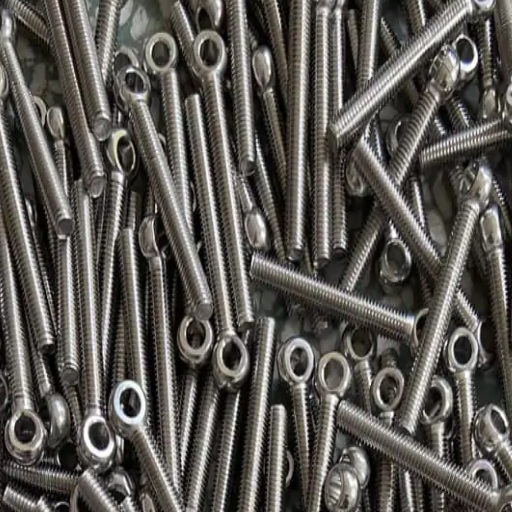
Key Material Properties
18-8 Stainless steel, in general, and including 304 and 316 grades, is characterized chiefly by an approximate 18% presence of chromium, with nickel enabling almost an 8 percent balance. This composition provides a corrosive-resisting ability, at least theoretically, by the formation of an invisible passive film of chromium oxide on the surface of the material. High nickel further enhances its resistance to corrosion brought about by acids and caustics, with the presence of 18-8 stainless making it fit for varied applications.
18-8 stainless steel is mechanically strong and ductile. Its tensile strength is approximately 515 MPa, while its yield strength is about 205 MPa, able to bear structural and load-bearing functions. On the other hand, it possesses superior elongation, permitting widespread deformations without fracture. This value lies in weldability, forming, and machining processes, wherein deformation or flexibility is required while maintaining the integrity of the workpiece.
Its thermal and magnetic properties serve well in enhancing the versatility of the 18-8 stainless steel. Excellent high-temperature stability is maintained, and the approximate melting point is 1400°F to 1450°F (760°C to 790°C). It is, however, non-magnetic in an annealed state due to this austenitic microstructure, which becomes an added advantage in electrical and special industrial applications. All the above attributes lend to the versatile use of 18-8 stainless steel in industries ranging from food processing to medical equipment, from automobile to marine.
Mechanical Properties of 18-8
18-8 stainless steel is mainly recognized for its mechanical strength and toughness; hence, it is used in the most high-end applications. Its tensile strength may range broadly from 73,200 psi to 90,000 psi (504 MPa to 620 MPa), depending on exact constituent composition and treatment. With this it allows the material to sustain fairly heavy loads before permanent deformation occurs.
Yield strength is another property of importance; it is generally cracked between 30,000 psi and 45,000 psi (205 MPa-310 MPa). This, combined with the ability of elongation (approximately 35% usually), provides a measure of how ductile 18-8 stainless steel is, i.e., how much it can be deformed into different shapes without cracking and breaking.
Also, 18-8 maintains an excellent hardness rating, generally in the 150-200 range of the Brinell hardness (HB) values. This degree of hardness endows it with good wear resistance whilst resisting deformation in an environment wherein the materials undergo repeated stresses, or abrasive wear is predominant. These mechanical properties mark 18-8 stainless steel as a highly versatile and dependable material within various industries.
Corrosion Resistance Characteristics
18-8 stainless steel draws its name from 18 percent chromium and 8 percent nickel present in its composition; chromium is the main element responsible for corrosion resistance. Chromium is able to develop a passive oxide film on the surface in various environments, which safeguards it against corrosive attacks. This layer is self-healing when minor scratches or surface abrasions occur; the regeneration is possible because oxygen is present to regenerate the oxide layer.
The material shows excellent corrosion performance against the most common environmental elements such as moisture, air, and fresh water. It also resists mild variations of acidity and alkalinity, hence making it a preferred corrosion-resistant material in chemical processing plants, food and beverage industries, and marine environments where rust and pitting resistances are quintessential.
While 18-8 stainless steel is generally a very good corrosion-resistant material, there are certain environments that may foster stress corrosion cracking (SCC). These are particularly chloride-rich environments, especially at high temperatures. In such more severe conditions, a steel enhanced in chloride resistance, such as 316 stainless steel, would usually be recommended instead. Overall, the corrosion-resistant attributes of 18-8 stainless steel make it an ideal choice for many industrial and domestic applications.
Applications of 18-8 Stainless Steel
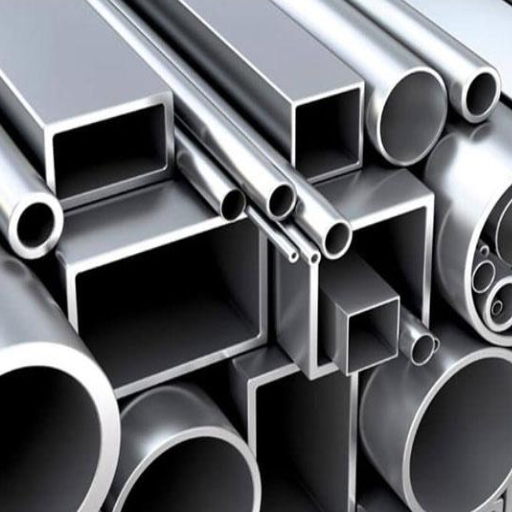
Food Processing Industry
The food processing industry happens to be one of the foremost applications of 18-8 stainless steel because of its ability to resist corrosion and maintain sanitary conditions when exposed to cleaning agents. For instance, when manufacturing food-grade equipment, this material finds high utility in mixing tanks, conveyors, storage containers, and kitchenware. The resistance of steel to oxidation and corrosion, even in acidic or salty surroundings, sustains the usefulness and reliability of the equipment employed in handling sensitive food products. Moreover, the non-reactivity of this steel safeguards the food purity and flavor from alterations during processing.
Another important reason 18-8 stainless steel is preferred for food processing applications is that it is easily cleaned and maintained. The material has a smooth, non-porous surface; therefore, it does not allow bacteria, spores, mold, or any dirt to grow, thereby keeping the environment sterile, as required by the industry. Besides, it can withstand very high levels of temperature during sterilization processes implemented to preserve food safety. Such resilience in those conditions eventually saves on long-term maintenance costs and downtime due to equipment failures at the onset.
With today’s improvements in food production technologies, the scope of 18-8 stainless steel usage has considerably broadened. For instance, under automated mass production machinery, parts made out of the material exhibit enhanced wear resistance with greater structural integrity, therefore minimizing the possibilities of contamination. In short, durability coupled with sanitation advantages and harsh chemical cleaning-agent resistance has made 18-8 stainless steel an unshakable ground for food processing fields.
Construction Applications
The construction industry uses 18-8 stainless steel, offering strength against corrosion and aesthetic appearance. Being durable and able to withstand extreme environmental conditions, this type of steel is chosen for ornamental as well as structural purposes. The following are five key application fields in construction using 18-8 stainless steel:
- Structural Beams and Supports: 18-8 Stainless steel is used to make load-bearing beams and structural reinforcements in buildings where corrosion resistance is essential in coastal and industrial areas. Its tensile strength lies between 70,000 and 90,000 psi; it provides optimal support, laying the groundwork for its lasting durability.
- Cladding and Facades: The shiny and reflective surface of 18-8 stainless steel makes it the most preferred material in modern architectural design for facades of buildings and cladding. This not only brings aesthetic value but also shields from weathering and UV.
- Fasteners and Connectors: Fasteners and connectors manufactured using 18-8 stainless steel join various architectural components. The resistance of an 18-8 stainless steel to stress corrosion cracking renders it an important material, ensuring its components run obdurately as prescribed, even under varying loads.
- Industrial Piping and Ductwork: These properties help in industrial piping and ductwork for water systems and HVAC systems, resisting rust and leaching, thus keeping the infrastructure running with minimal intervention over long periods.
- Bridges and Infrastructure: Bridges, railings, and other infrastructures enjoy the strength and resistance of stainless steels to chloride-induced pitting. This application is rather useful in coastal areas where the salty air hastens the rate of degradation of common materials.
The very traits that enhance the usability of 18-8 stainless steel keep it as the must-have material in the construction industry, which takes in the two factors of functionality and sustainability in the long run.
Medical Tools and Equipment
Particularly, stainless steel grades such as 304 and 316 are essential in the manufacturing of medical instruments and equipment, with properties including excellent biocompatibility, corrosion resistance, and sterilization ease. These properties come in handy in environments where utmost hygiene is required, such as operating theaters and laboratories. Surgical instruments like scalpels, forceps, retractors, and needles often use stainless steel because it cannot withstand repeated sterilization cycles of high heat at the expense of its structural integrity or surface finish.
Moreover, stainless steel finds extensive use in medical implants such as orthopedic screws, plates, and prosthetic joints. Its durability ensures long-term use of the implants while minimizing wear-related failures inside the body. Advanced modifications such as electropolishing increase the antimicrobial properties of stainless steel and reduce bacterial colonization. These enhancements advance patient care by lessening the chances of infection in key health situations.
Studies point out that stainless steel has been considered necessary owing to its strength and versatility for the upkeep of new medical technologies that promote reliability and efficacy in contemporary health applications.
Benefits of Using 18-8 Stainless Steel
Durability and Longevity
Known for excellent durability and longevity, both of which are highly prized by this type of alloy, 18-8 stainless steel constitutes an austenitic family of alloys primarily made of 18 percent chromium and 8 percent nickel. Such alloys offer superior corrosion resistance; hence, whenever metal is subjected to moisture, chemicals, or any corrosive atmosphere, these alloys should be preferred if at all possible. Its tough structure resists cracking from stress or temperature changes, ensuring performance is always guaranteed in heavily demanding applications. It is due to these characteristics that 18-8 stainless steel has found wide usage in such fields as healthcare, construction, food processing, and so forth.
This inherent ability to provide excellent corrosion resistance at high temperatures significantly increases the applications of 18-8 stainless steel. Applications such as high-temperature autoclaving, baking in ovens, or operating heat exchangers will greatly benefit from this corrosion-retardant at elevated temperatures. Large metallurgical and testing works have proved that the chromium in the alloy develops a passive oxide film on the steel surface. When scratched, this oxide film can repair itself if oxygen is readily available; hence, it offers prolonged corrosion protection to the substrate. This self-healing feature guarantees corrosion resistance for a long time and also requires minimal maintenance, which is crucial in reducing operational costs.
Moreover, 18-8 stainless steel retains its structural strength over time even in the presence of cyclic stresses-this is known as fatigue resistance. In the medical field, for instance, surgical instruments and implants made from 18-8 are subject to cyclic loading and repeated sterilization and keep working for a long period of time without deterioration. Hence, it lessens the frequency of replacement and ensures firm reliability pertaining to investment and safety. Through advanced processing techniques like precision forging or cold working, the mechanical properties of 18-8 stainless steel can be further enhanced by the producers to cater to demands that require a material of integrity and durability.
Corrosion Resistance Advantages
The corrosion resistance of 18-8 stainless steel is endowed on it due to certain specific chemical compositions along with microstructural considerations. The corrosion resistance strength of this alloy can be summarized into five major pro-arguments:
- Resists Oxidation: This thin, very adherent, and protective passive oxide layer owes its existence to the chromium content (average 18%) and forms on the surface of the alloy to protect it from oxidation in any atmosphere that contains moisture or relative humidity.
- Resistant to Acids: The alloy resists many acidic solutions and is, therefore, applicable when diluted acids such as nitric or phosphoric acids attack the service environment. It has been demonstrated that it may sustain environments with a pH of around 2.5 at ambient temperature.
- Pitting and Crevice Corrosion Resistance: A high nickel content of around 8% imparts resistance to localized attacks such as pitting and crevice corrosion in chloride environments like marine or coastal atmospheres.
- Suitable for High-Salt Applications: Testing has shown that 18-8 stainless steel can resist structural degradation when subjected to salt spray environments for more than 500 hours.
- Durability at Temperature Extremes: It maintains its corrosion resistance with operating temperature right up to about 1500°F (815°C), thus turning out to be the most corrosion-resistant material for industrial and heat-intensive applications.
Together, these properties have made 18-8 stainless steel the most sought-after harsh environment application where long-term corrosion resistance matters quite.
Cost-Effectiveness in Various Industries
Thanks to its high durability and almost nonexistent maintenance needs, the 18-8 stainless steel has an added touch of cost-effectiveness, particularly in various industrial applications. Its corrosion resistance is a great asset, as this advantage cuts down a lot of costs on replacements or coatings requiring protection. They are more often used in situations where long-term performance is of utmost consideration. An example in the construction and architecture industries includes the employment of 18-8 stainless steel for structural components, roofs, or facades that resist environmental deterioration for decades, and so forth with maintenance and repair costs.
The production and food enterprises are also very important for the cost-saving factor of 18-8 stainless steel. The metal does not react with food items or liquids, the ease in cleaning it, and its ability to resist the buildup of bacteria make it an ideal material for mixing tanks, conveyors, and food processing equipment. This, in the long run, reduces the interruption in operations while also ensuring a wholesome standard scorched by an incident of equipment failure or contamination. The opposing temperature has made the construction very cost-efficient as well, as this negates the use of a special alternative material.
In addition to industrial and manufacturing uses, 18-8 stainless steel has become invaluable in chemical and marine applications. Since it resists highly corrosive conditions such as those involving chlorides or sulfates, it simplifies material selection for pipelines, storage containers, and shipbuilding components. Thu,s this adaptability saves dramatically by eliminating the need for specialised alloys or aggressive maintenance regimes. The fact that stainless steel is recyclable downright enhances its green rating, providing an economically and environmentally sustainable partner in critical applications for the industries. Together with these features, 18-8 stainless steel has firmly planted itself as a solid and financially targetable solution in testing arenas where performance is not to be compromised.
Maintenance Tips for 18-8 Stainless Steel
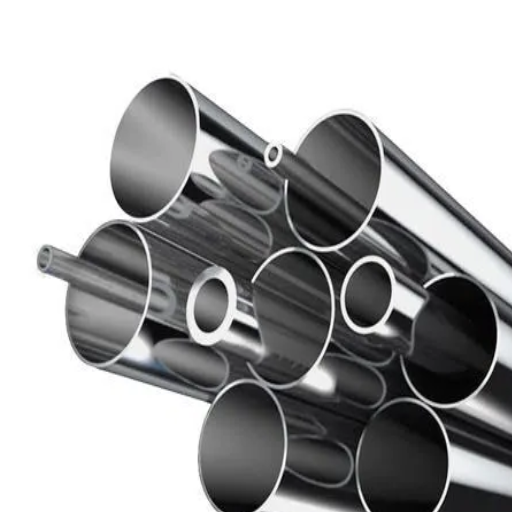
Cleaning Best Practices
My maintenance technique involves constant cleaning of the 18-8 stainless steel to keep its qualities superior and from surface contamination. The best maintenance procedure is to use a mild detergent with warm water, and this combination just washes off dirt and stains. I usually use a soft cloth or sponge to avoid anything abrasive that may interfere with the smooth finish of the material. Non-abrasive cleaners for stainless steel are also really good for the tougher stains.
I always advise them to stay clear of chemicals like bleach or chlorine-based cleaners because, slowly, those chemicals would do one nasty thing: corrode or stain the substance. Instead, I go for pH-neutral cleaners to keep the stainless steel intact. And if any residue or stain refuses to budge, my best suggestion would be baking-soda-and-water paste. It is practical, safe, and a better alternative to harsh cleaners.
I also instruct the surface to be rinsed with clean water after washing to avoid residue buildup. Then, let the steel dry using a microfiber cloth to keep it free from water spots for a pristine view. The consistent implementation of these methods has served as a reliable way to preserve the long life and visual appeal of 18-8 stainless steel.
Preventive Care Strategies
Preventive care for 18-8 stainless steel essentially involves the preservation of its passive oxide layer required for corrosion resistance. This layer is hindered when the stainless steel surface suffers exposure to aggressive chemical agents such as chlorides and acids, which leads to the onset of pitting and localized corrosion. This is why frequent inspection of the stainless steel surface in search of discoloration and micro-scratches, which can serve as den sites for contaminants and moisture, hastening degradation, is highly recommended.
A further aspect requiring nice attention is that of operative environmental control. For example, in humid or coastal environments having high exposure to salt-laden air, periodic cleaning with fresh water is advised to wash off the chloride deposits. Also, protective coatings or industrial-grade stainless steel cleaners made specially for 18-8 alloys can afford additional protection from the harsh environment.
Operation-wise, periodic training of personnel in charge of stainless steel components should be a critical element to enforce proper procedure and handling concerning cleaning. Finally, recording the maintenance schedule and care treatments evidences the actual application of the preventive measures, thus minimizing situations unfavorable to any long-term compromise, either structural or aesthetic. With these measures synergized with the emerging concepts in material sciences, stainless steel is preserved optimally.
Maximizing Lifespan and Performance
Proper care of stainless steel entails effective cleaning in order to extend its lifespan and retain its performance capacities. Stainless steel forms a passive layer of chromium oxide to provide corrosion resistance. The periodic cleaning prevents the surface from collecting any impurity-cum-chloride or sulfate that may cause pitting corrosion in the long run. Nonabrasive agents such as microfiber cloths with gentle detergent or a good stainless steel cleaner may be used for general cleaning. Avoid acidic chemicals such as hydrochloric, chlorinated, etc., since they act against the passive layer.
Cleaner fine-tuning with alkaline or citric acid cleaners will have to be implemented for heavy contamination applications in industrial or coastal scenarios. Therefore, they break down deposits with some severity, yet at the expense of surface degradation in a lessened measure. This is then duly followed by rinsing with deionized or distilled water, so that no residue is left behind that could compromise the protective layer of steel.
By way of such cleaning programs, followed by continuous upkeep and advances in surface treatments, the stainless structures and components can retain their functionality and appearance through highly demanding applications.
Comparisons: 18-8 vs 304 and 316 Stainless Steel
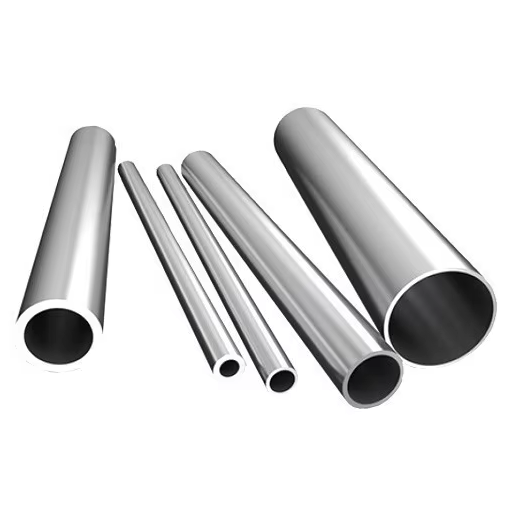
Key Differences Between 18-8 and 304
Both 18-8 and 304 grades of stainless steel share almost similar compositions, consisting of 18 percent chromium and 8 percent nickel. The carbon percentage in 304 grade, on the other hand, can be as high as 0.08; therefore, it is secondly best resistant to corrosion and stronger, while 18-8 grade steel is more economical and versatile.
18-8 vs 316: Performance Analysis
While the 18-8 type provides the best value-for-money general corrosion resistance wash, Type 316, endowed with the element molybdenum, makes it preferentially well-suited in the fight against chlorides and harsh environments, rendering it a favorite in marine or chemical applications.
Choosing the Right Grade for Your Needs
Several crucial factors require examination when choosing the right stainless steel grade for your application to provide the best performance. Both the price plus inhibitor and good conditions of use are important in the choice of material.
In general, when the stainless steel is to be used for general applications and its cost efficiency is to be considered, 18-8 stainless steel is adequately durable for any extreme corrosive environment. It has good rust resistance and provides considerable ductility under low-to-medium environmental stresses, well-suited for indoor use or very non-critical parts in an installation.
In contrast, a more demanding environment, namely one with chlorides or saltwater exposure, necessitates good protection, which is provided by Grade 316, thanks to the molybdenum that increases corrosion resistance. This grade would be well-suited for marine and medical applications and chemical processing equipment. While costing more, greater strength and oxidative stress resistance in these cases rightly outweigh the cost.
Depending on the requirements of your working environment, it is significant to weigh the cost against corrosion resistance and longevity to come to a conscious solution. For basic application or high-performance resistance, the functioning criteria together with practical efficiency must be weighed into the choice.
Frequently Asked Questions (FAQ)
Q: What is 18-8 stainless steel?
A: 18-8 stainless steel is a type of austenitic stainless steel and contains about 18% chromium and nearly 8% nickel. This composition gives it the best resistance to corrosion and allows for enormous versatility in its application, including cookware and fasteners.
Q: How does 18-8 stainless steel compare with 304 stainless steel?
A: 18-8 stainless steel is the same as type 304 stainless steel. Both have similar quantities of chromium and nickel to impart corrosion resistance and allow easy forming. Although the two may be assigned different names in different industries, 18-8 is simply another name for type 304.
Q: What are the properties of 18-8 stainless steel, and what are its uses?
A: The properties of 18-8 stainless steel are very resistant to corrosion, very good weldability, and are also basically non-magnetic. Hence, it finds applications in many areas, spanning from kitchen utensils to processes involved in chemicals, etc., due to its stereotype.
Q: What is the difference between 18-8 stainless steel and 316 stainless steel?
A: Basically, the difference between 18-8 stainless (304 stainless) and marine-grade stainless of 316 lies in the addition of molybdenum in the latter. This gives 316 stainless steel superior corrosion resistance, particularly in chloride environments, thereby making it suitable for marine engineering applications.
Q: Is 18-8 stainless steel magnetic?
A: In the annealed state, 18-8 stainless steels tend to be generally non-magnetic, although they may gain a slight magnetic property during cold working. This very feature is used in cases where magnetism may interfere with function.
Q: Can fasteners be made of 18-8 stainless steel?
A: Sterilizing fasteners are made from 18-8 stainless steel due to the advantages of great tensile strength, durability to physical wear, and resistance to rust and corrosion. These qualities give it a very wide range of fastening applications in different environments.
Q: What are the pros of cookware made with 18-8 stainless steel?
A: Benefits of using 18-8 stainless steel in cookware include the excellent distribution of heat, resistance to staining, and resistance to high heat. It offers much better durability and is cleaner to work with, so both professional and amateur cooks enjoy working with it.
Q: How does the corrosion resistance of 18-8 stainless steel compare with 430 stainless steel?
A: 18-8 stainless steel is more corrosion-resistant than 430 stainless steel, which is a ferritic stainless steel. The 430 is cheaper but is not the rust and corrosion-resistant type, making 18-8 a better option for applications where moisture and harsh environment exposure exist.
Q: Why is 18-8 stainless steel used extensively in the food industry?
A: This stainless steel variety finds popularity in the food-processing industry because it is hygienic and resistant to rust and corrosion. It is easy to clean, will not react with foods, and keeps up its appearance over time, which is why food-processing equipment and utensils are most commonly fabricated from it.
References
- Evaluation of Type 304 Stainless Steel as a Substitute for Type 347
This study evaluates the resistance behavior of an unstabilized grade of 18-8 stainless steel, Type 304. - Transformation and Magnetic Phenomena in Boron Stainless Steel Vertical Safety Rods
Deals with the structural stability of low-carbon 18-8 stainless steels containing boron. - Studies Related to Microbially Induced Corrosion of Stainless Steel 304 and 316
Explores corrosion resistance of 18-8 stainless steel (304 grade) in different environments. - Research Report on Stainless Steel in Sulfuric Acid
Studies the behavior of 18-8 stainless steel in sulfuric acid environments. - Study of Gamma-Alpha Phase Transformation in 18-8 Stainless Steel by Cold Work
Examines the variation of mechanical and chemical properties of 18-8 stainless steel on applying cold working.
Key Takeaways
18-8 stainless steel offers an excellent balance of corrosion resistance, mechanical strength, and cost-effectiveness across diverse industrial applications. While it shares similarities with 304 grade steel, its specific composition makes it ideal for general-purpose use where extreme corrosion resistance isn’t critical. For marine or chemical environments, consider upgrading to 316 grade for superior chloride resistance.


